 Weaving is one of the oldest crafts in the world. People use various threads to weave the fabric. They always have either plant origin (linen, hemp, cotton, nettle cloth) or animal origin (sheep or alpaca wool, silk). In this material, we’re hoping to surprise you by showing how to make the fabric from spiderweb. Well, actually from spider silk that is extracted right from the body of a spider. It is fascinating how they collect these delicate threads and work with them.
Weaving is one of the oldest crafts in the world. People use various threads to weave the fabric. They always have either plant origin (linen, hemp, cotton, nettle cloth) or animal origin (sheep or alpaca wool, silk). In this material, we’re hoping to surprise you by showing how to make the fabric from spiderweb. Well, actually from spider silk that is extracted right from the body of a spider. It is fascinating how they collect these delicate threads and work with them.
This article is based on interview with Kathleen Bickford Berzock from The Art Institute of Chicago and on the video of the Victoria and Albert Museum
You can also read about other weaving techniques around the world:
Ikat silk weaving in Thailand. Traditional Thai craft
Cambodian textile got a second life. Cambodian traditional silk ikat weaving
Yuki-tsumugi weaving technique. How to make Japanese hand-woven silk fabric
Secrets of Egyptian Naqada hand weaving
Korean traditional Ramie Cloth weaving. One of the most complicated and hard-working crafts in Korea
The creators of the spider silk textile Simon Peers and Nicholas Godley, longtime residents of Madagascar, became fascinated by the history of weaving with spider silk.
The dream of harvesting spider silk and weaving with it is something that's very ancient, but it was explored anew in the 18th century by the French, who were interested in finding a way to take business away from the Chinese who were weaving with silkworm silk.
A French missionary named Father Paul Camboué was in Madagascar in the 19th century using local Malagasy weavers, who were working on a grand weaving that could be displayed at the Exposition universelle in Paris. This was one of these sort of Colonial World's fairs. They made hangings for a bed, all woven from spider silk that was harvested in Madagascar. However, these weavings have since gone missing, nobody knows what happened to them.
And from that period until today, nobody has successfully woven with spider silk.
Spider silk has amazing physical properties – it's extremely elastic, extremely strong (stronger than kevlar), but these things make it very challenging to weave with human hands. The other reason it's extremely challenging to work with, of course, is that spiders are impossible to domesticate. To gather enough spider silk to make a textile has proven to be almost impossible.
The golden orb spider lives primarily in Madagascar. The female spider is about the size of a human palm. The females weave these massive 6-7 foot webs. Today, these female spiders are collected to make golden spider silk fabric.
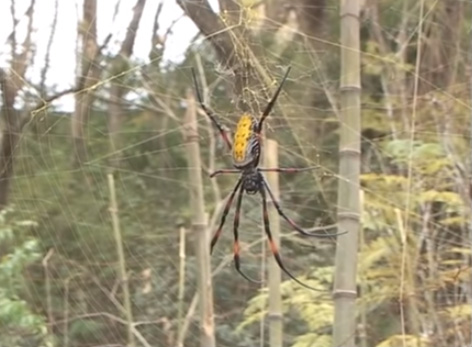
The silk is extracted touching the spinnerets on the spider’s abdomen, the silk sticks to the finger and is pulled. The spiders aren’t harmed in the process, and after giving the threads, they are returned to the wild.
The spiders are separated into groups of 24 individuals to produce a 24-strand thread. This 24-strand thread is wound onto cones. From the cones the thread is “thrown” (twisted and doubled) into multiplies of 24 depending on the thickness required and transferred to bobbins. There are actually little machines that spin multiple strands together to make a single thread. The prepared thread is then mounted on the loom for weaving.
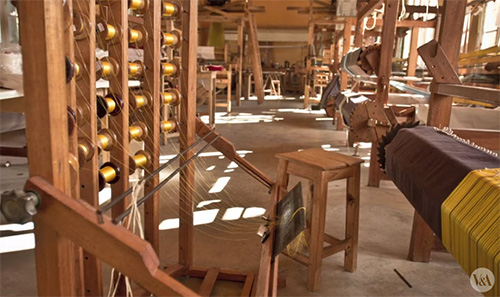
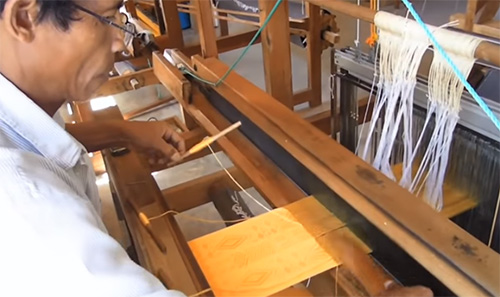
Here is a large panel woven from golden orb spider silk. It was made in modern time. It took a group of 80 people and 5 years to collect enough silk to make this large panel. And this whole panel contains over a million strands of spider silk in it.
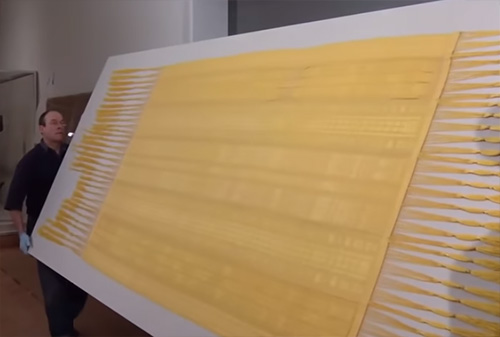
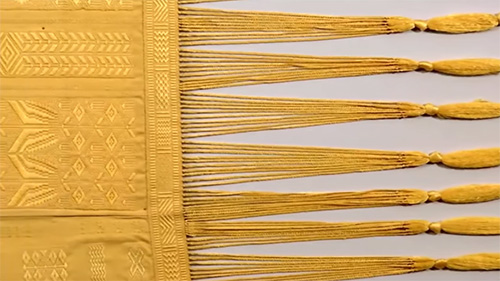
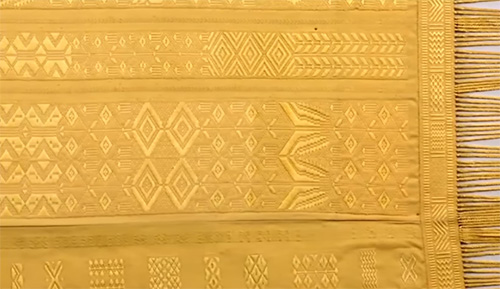
Also, here are two other modern pieces – a shawl and a cape – of golden spider silk textile. Two different techniques were used to create these garments.
Spider silk shawl
The shawl is made using traditional weaving techniques and motifs from the highlands of Madagascar. It is brocaded with geometric shapes representing stylized birds and flowers.

The weft brocading technique requires extra pattern-shuttles each with ten 96-strand threads.
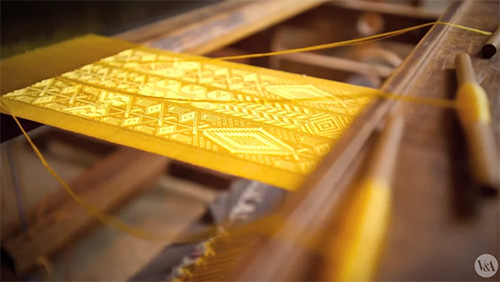
Each pass of the shuttle creates the raised motifs that comprise 960 strands of spider silk.
Spider silk cape
The embroidered and appliqued cape has a plain taffeta ground weave.
Once the panels are woven, the prepared design is drawn and transferred onto the silk.
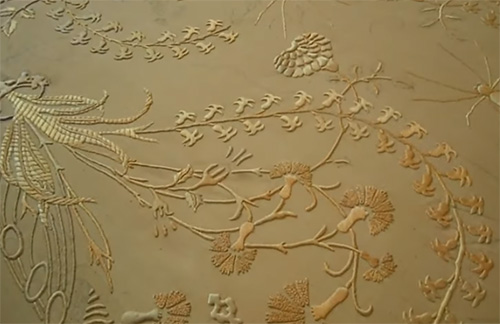
The panels are placed on embroidery frames giving a taut surface on which to work. The cape features a range of embroidery and applique techniques.
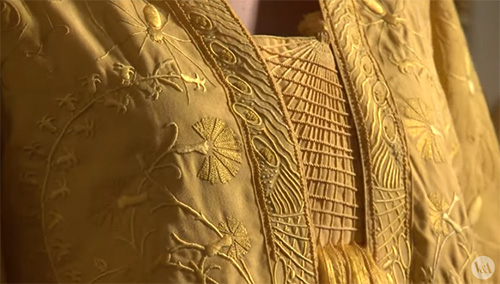
The completed panels are cut to shape and a woven spider silk lining is attached to the underside.
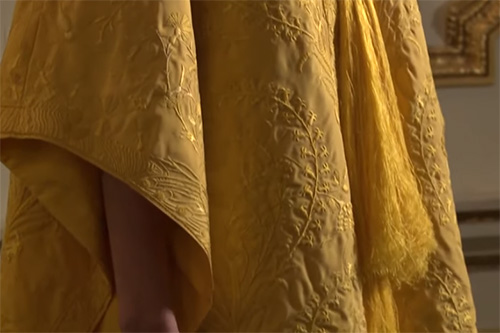
The panels are then stitched together to create this unique spider silk cape.
The scientific community has become very interested in the potentials of spider silk in the military and the medical arenas. They are experimenting with creating synthetic spider silk. They've been unsuccessful thus far at creating a product that's as perfect as the silk that comes out of the spider itself. The spiders are so good at doing what they’re meant to do!
(c)


